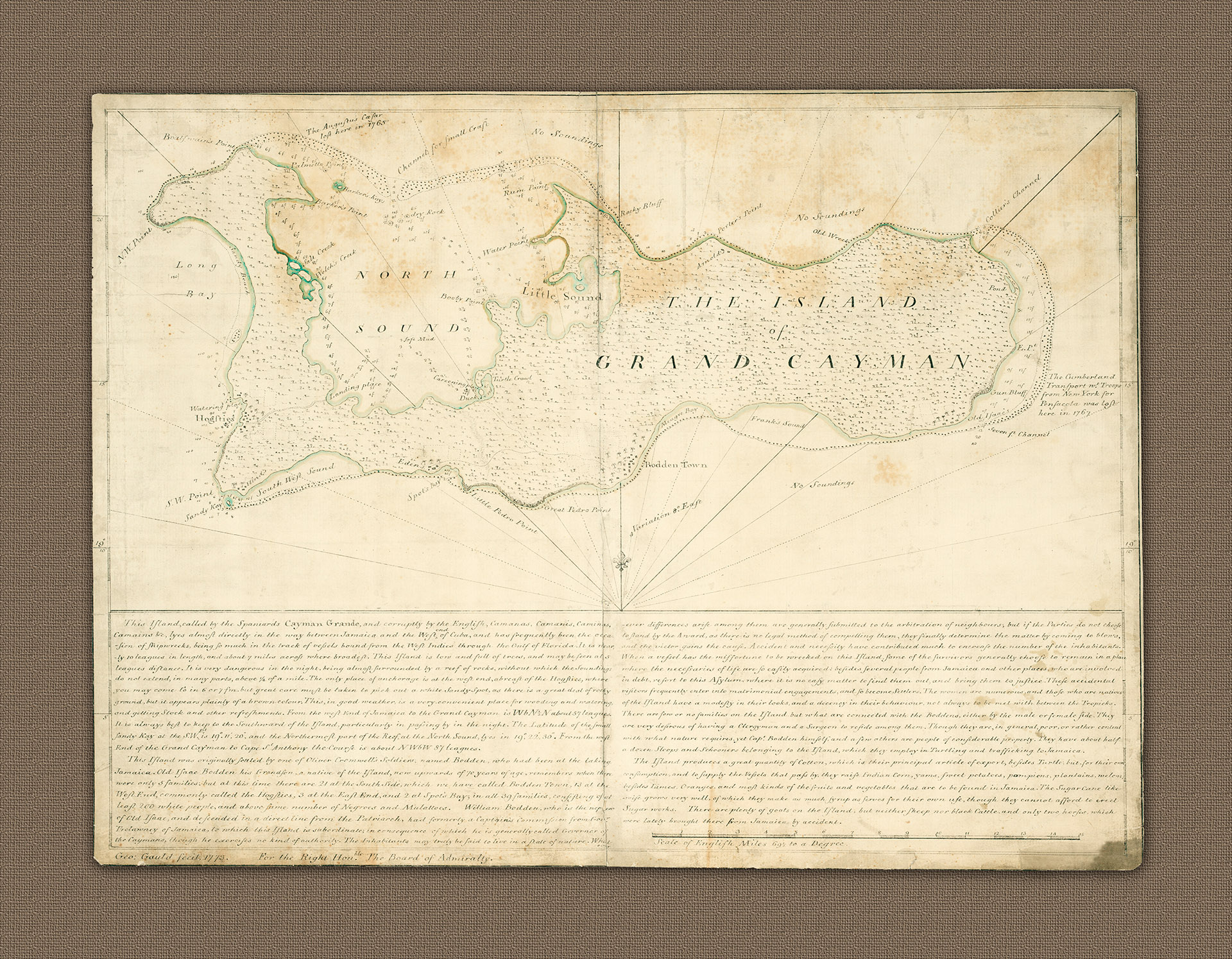A718 - The Island of Grand Cayman
This beautiful little hand-drawn plan of the Island of Grand Cayman was made by British surveyor George Gauld between the 4th and 16th May 1773. It is a stunning example of Gauld's work and demonstrated why he was so highly valued by his superiors.
- 1773
- George Gauld
- h16.5" x w21"
- L
This survey of the Island of Grand Cayman was made by George Gauld between the 4th and 16th May 1773.
On the 27th April, Gauld, in his newly acquired survey sloop ‘Florida’, left Port Royal Jamaica accompanied by HMS Northampton. He had just finished his masterful surveys of the harbour of Kingston and Port Royal for Vice-Admiral Sir George Rodney, Commander in chief in Jamaica.
On May 4th the two ships anchored in a small cove named Hogstie Bay, at the west end of Grand Cayman. Leaving the Northampton and Florida at anchor, Gauld and his survey team took to smaller boats to start the survey of the island.
Starting at Sandy Key on the South West point of the island, Gauld made observations and the following day he began a nine-day circumnavigation of the island. Some soundings were taken in North Sound and also inside the reef at the eastern end of the island. Further soundings were made in Hogstie Bay down as far as Sandy Key.
At the eastern end of the island Gauld records the point where HMS Cumberland which had been transporting troops from New York to Pensacola, via Jamaica was lost (28th November) in 1767. He also notes the loss of the ‘Augustus Caesar’, an English merchantman bound for London from Jamaica on the reef off Palmetto Point on the NW of the island in 1764. Gauld's chart clearly demonstrates the inaccessibility of the island to large craft. Not even the large North Sound could be entered by large craft.
One of the most important features of this chart is unquestionably the remarks which Gauld includes at the bottom of the survey. It is very typical of his work that he include detailed and sometimes copious notes wherever he deemed necessary and this work is a case in point. At the start of his remarks he sets out the major concerns: the island is very low and flat and at night and it is difficult to see. It surrounded by rocks and reefs it provides a real danger to vessels sailing from Jamaica bound for the Gulf of Florida.
Gauld includes on the survey a history of the island stating that 'This island was originally settled by one of Oliver Cromwell's soldiers named Bodden who had been at the taking of Jamaica..' He goes on to reveal that the residents 'may truly be said to live in state of nature. Whatever differences arise among them are generally submitted to the arbitration of neighbours, but if the parties do not choose to stand by the award, as there is no legal method of compelling them, they finally determine the matter by coming to blows, and the victor gains the cause.'
Gauld goes on to describe the inhabitants of the island further and even refers to the island as an 'Asylum'. His description of the women on the Island is, at least, complimentary! He rounds-up his narrative with a list of the island produce, the nature of business and with whom the islanders trade.
This is, truly, a stunning example of Gauld's work and demonstrates why he was so highly valued by his (British) superiors.
- The Island of Grand Cayman


